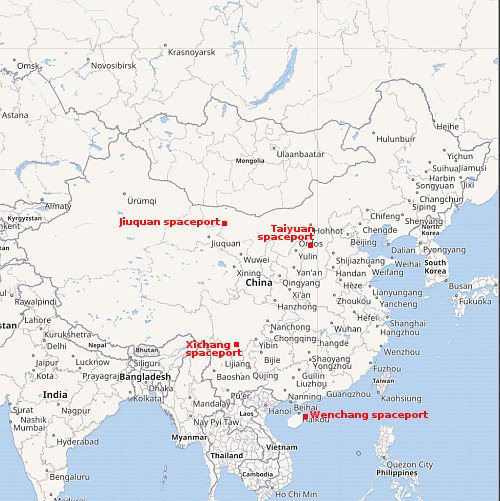Chinese pseudo-company successfully completes rocket hop test
The Chinese pseudo-company Landspace successfully completed a rocket hop flight of its Zhuque-3 prototype hopper yesterday, testing vertical take-off and landing in preparation of recovering and reusing the first stage of its rockets.
The hop itself went to 350 meters and performed a small translation maneuver to the landing pad. The hope is called “ZQ-3 VTVL-1” which refers to “Vertical Takeoff – Vertical Landing”. It uses a single TQ-12 methane engine, which is also used on the current ZQ-2 rocket. The engine can throttle between 50-110% of the normal 80 tons of thrust, giving it a throttle range between 40 and 88 tons. The performed flight went on for roughly 60 seconds. The weight of the hopper is 50.3 tons.
Landpace confirmed the landing precision with 2.4 meters, with a landing speed of 0.75 meters per second, at a pitch angle of roughly 0.14 degrees, and a roll angle of 4.4 degrees. The hopper survived the hop and is already being inspected after the flight.
Video of the hop can be viewed at the link. The hopper is almost identical in concept to SpaceX’s Grasshopper test vehicle used by that company, flying with one engine of the same type used in its operational rocket.
If their test program continues as planned, Landspace hopes to begin flying reuseable stages in 2025, with that first stage capable of flying 20 times.
Of all the pseudo-companies in China, Landspace appears to be the most successful. It not only has an operational orbital rocket, Zhuque-2, that has carried satellites into orbit twice (here and here), it is very close to achieving rocket reuseability competitive with SpaceX.
The Chinese pseudo-company Landspace successfully completed a rocket hop flight of its Zhuque-3 prototype hopper yesterday, testing vertical take-off and landing in preparation of recovering and reusing the first stage of its rockets.
The hop itself went to 350 meters and performed a small translation maneuver to the landing pad. The hope is called “ZQ-3 VTVL-1” which refers to “Vertical Takeoff – Vertical Landing”. It uses a single TQ-12 methane engine, which is also used on the current ZQ-2 rocket. The engine can throttle between 50-110% of the normal 80 tons of thrust, giving it a throttle range between 40 and 88 tons. The performed flight went on for roughly 60 seconds. The weight of the hopper is 50.3 tons.
Landpace confirmed the landing precision with 2.4 meters, with a landing speed of 0.75 meters per second, at a pitch angle of roughly 0.14 degrees, and a roll angle of 4.4 degrees. The hopper survived the hop and is already being inspected after the flight.
Video of the hop can be viewed at the link. The hopper is almost identical in concept to SpaceX’s Grasshopper test vehicle used by that company, flying with one engine of the same type used in its operational rocket.
If their test program continues as planned, Landspace hopes to begin flying reuseable stages in 2025, with that first stage capable of flying 20 times.
Of all the pseudo-companies in China, Landspace appears to be the most successful. It not only has an operational orbital rocket, Zhuque-2, that has carried satellites into orbit twice (here and here), it is very close to achieving rocket reuseability competitive with SpaceX.




